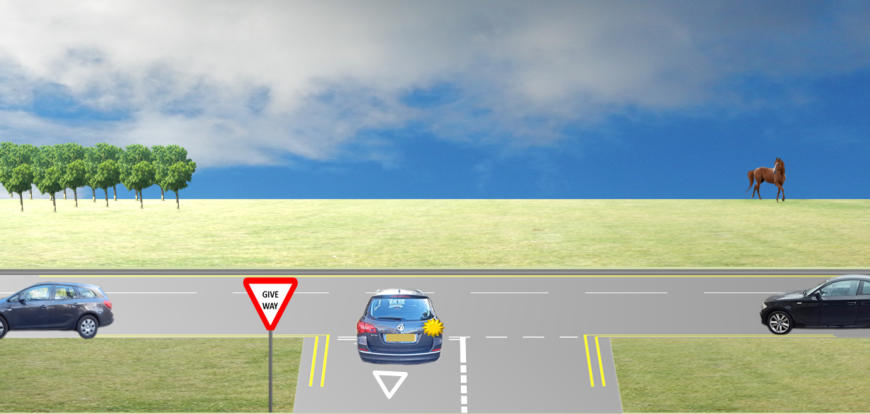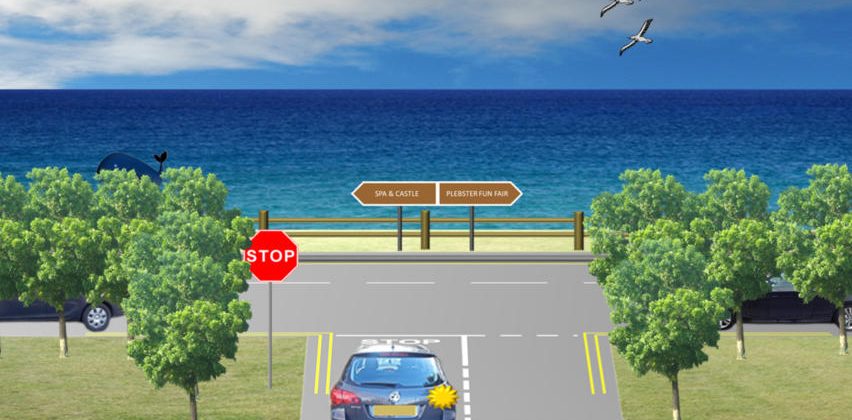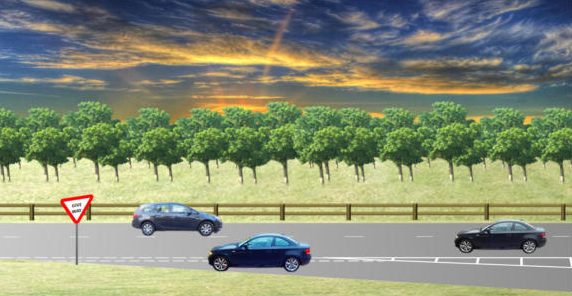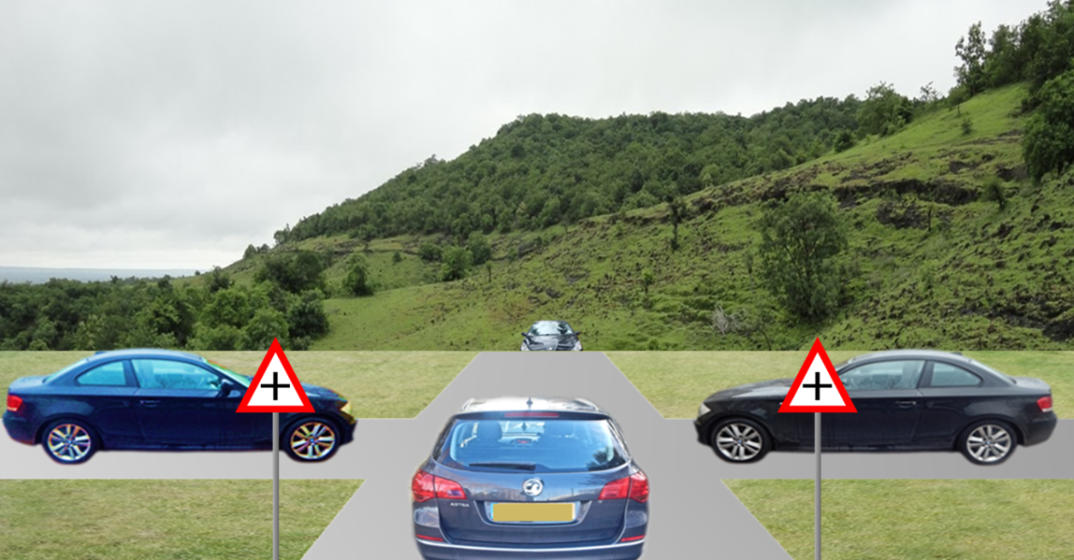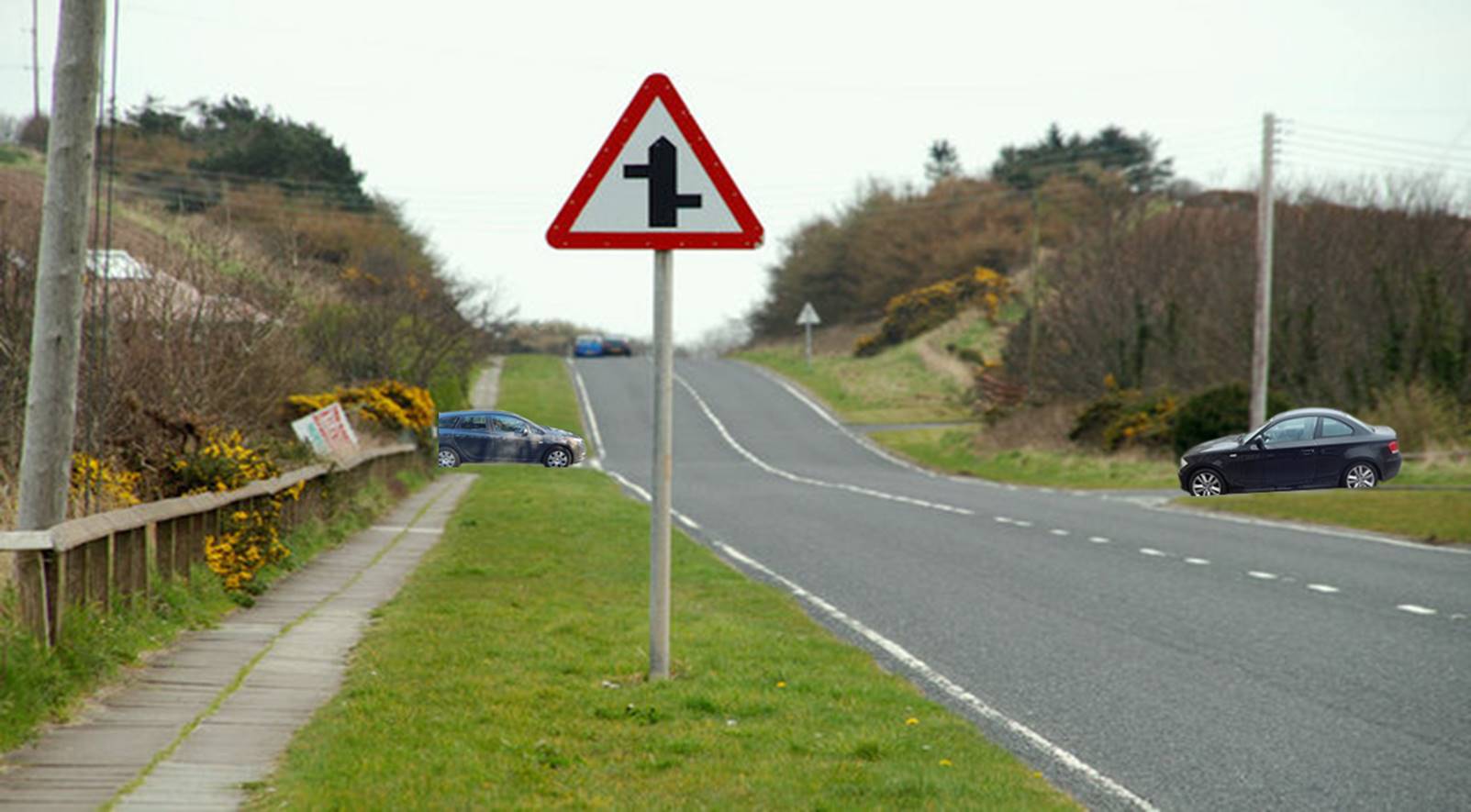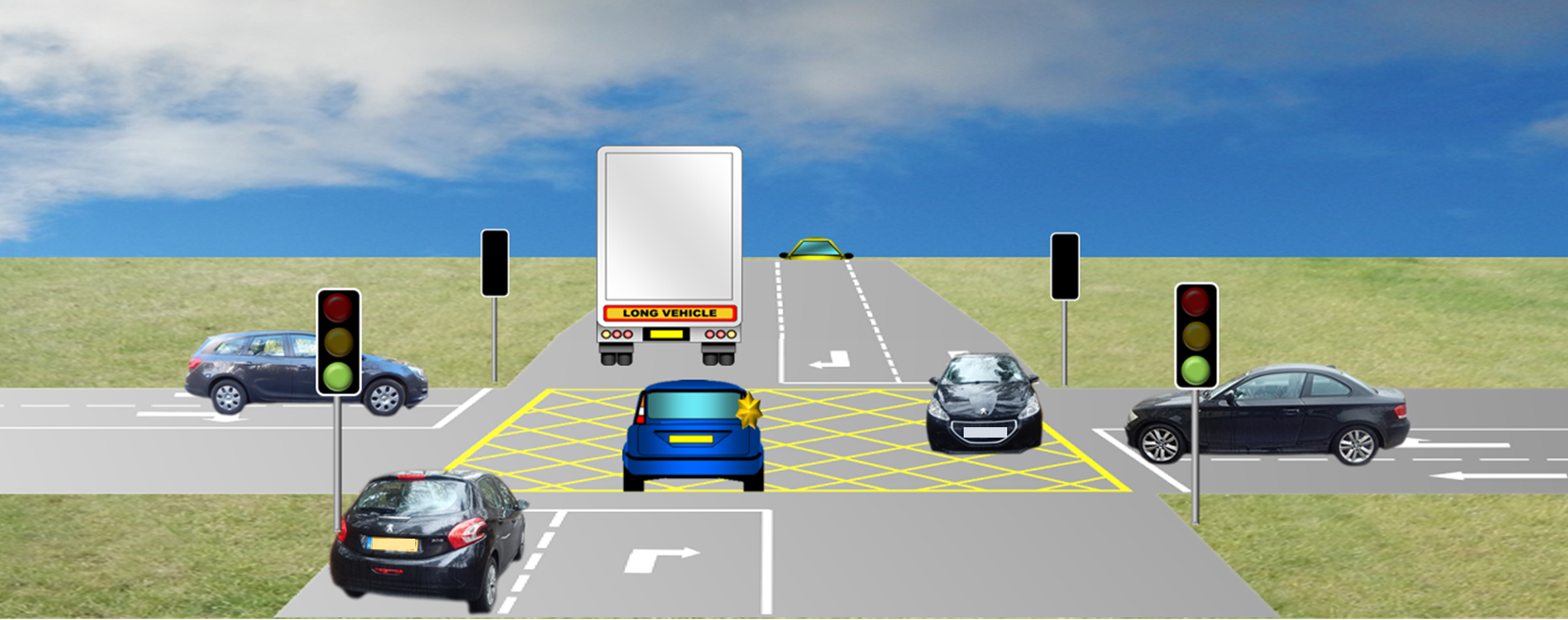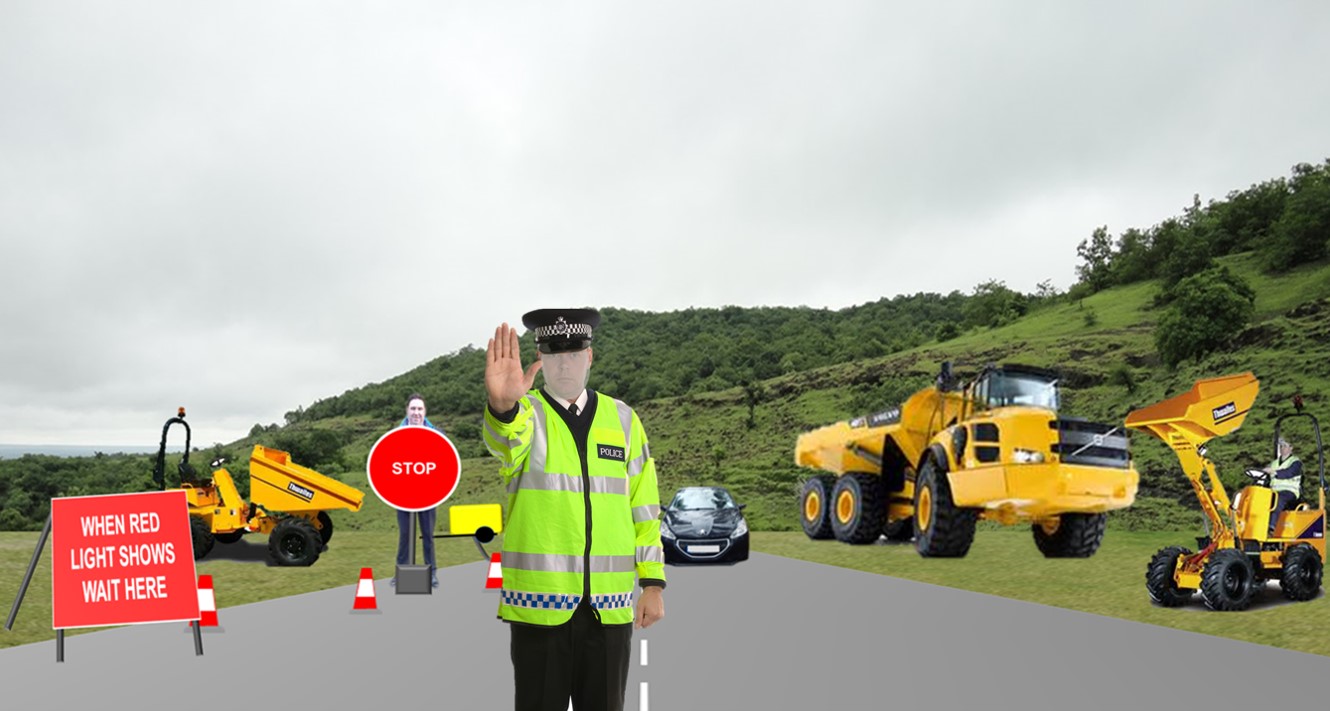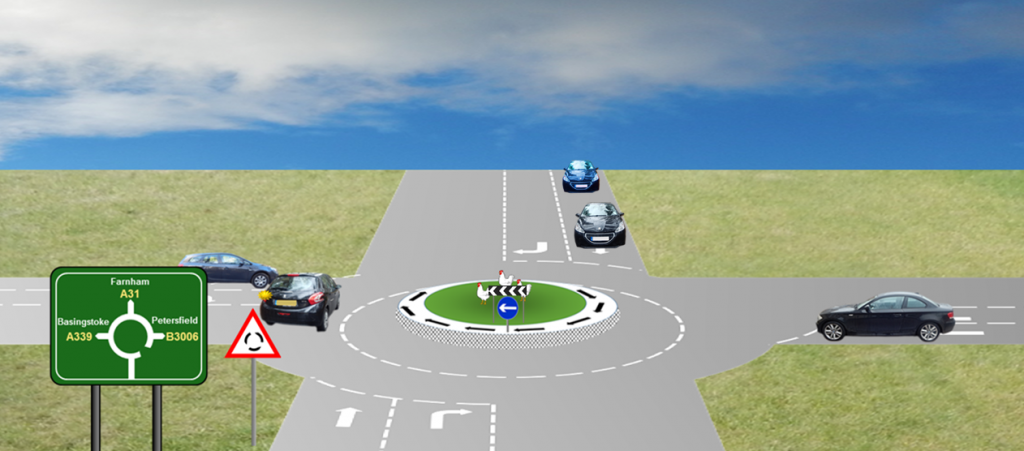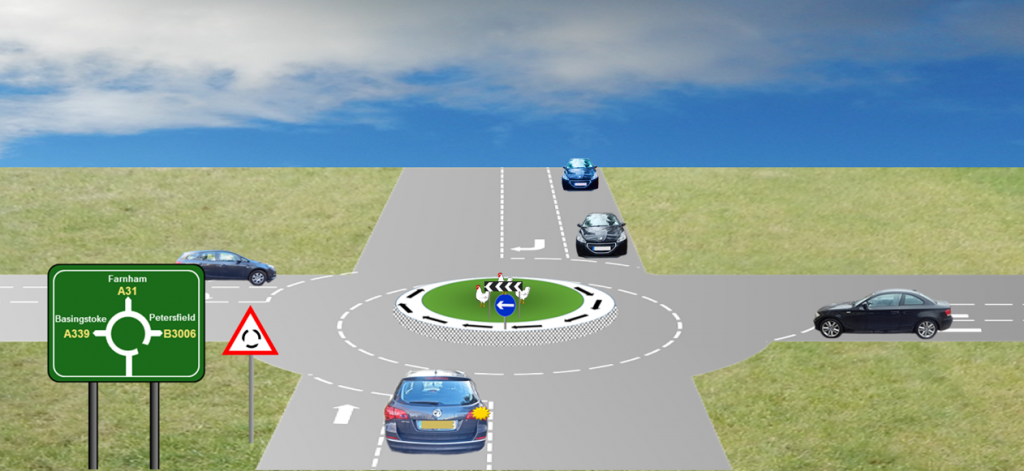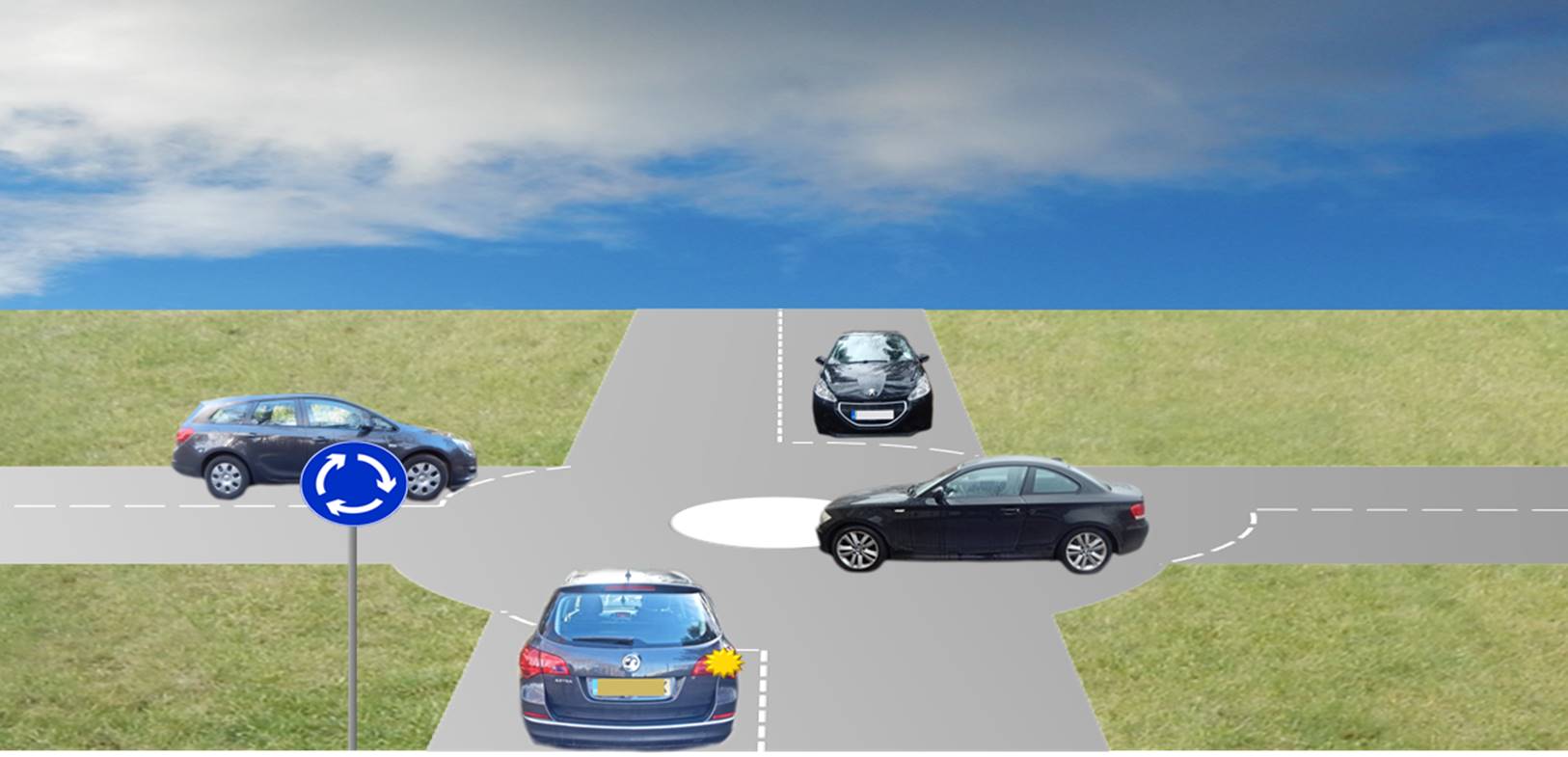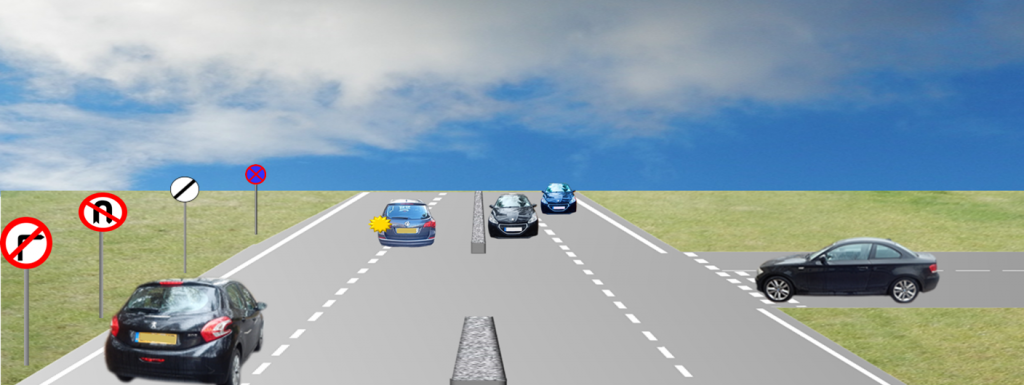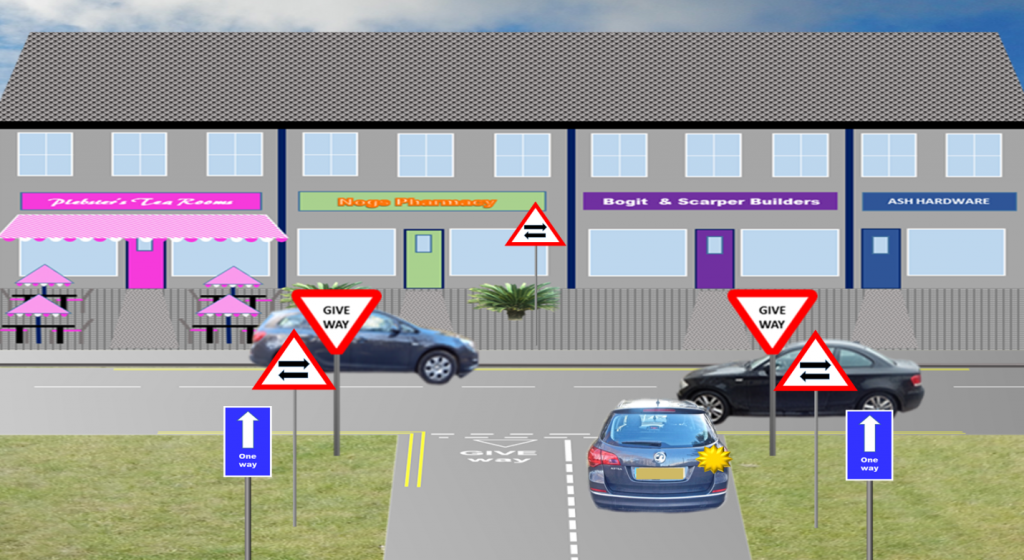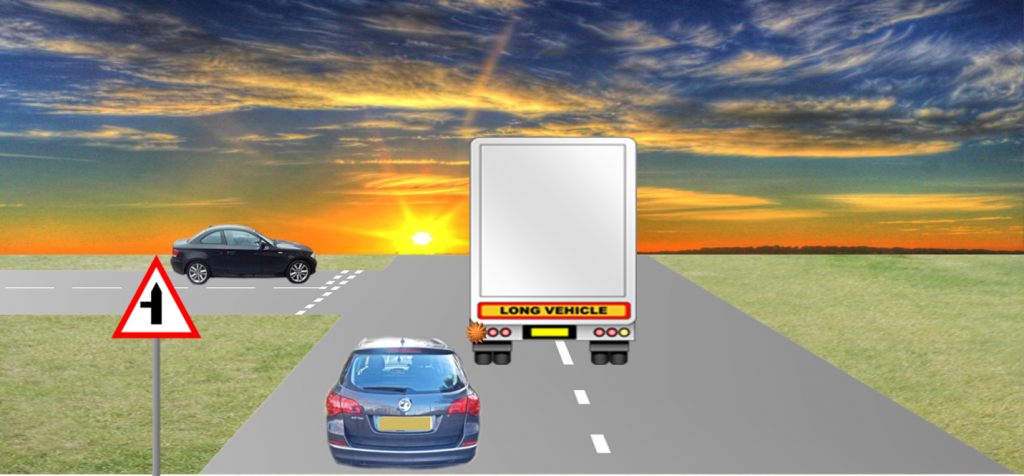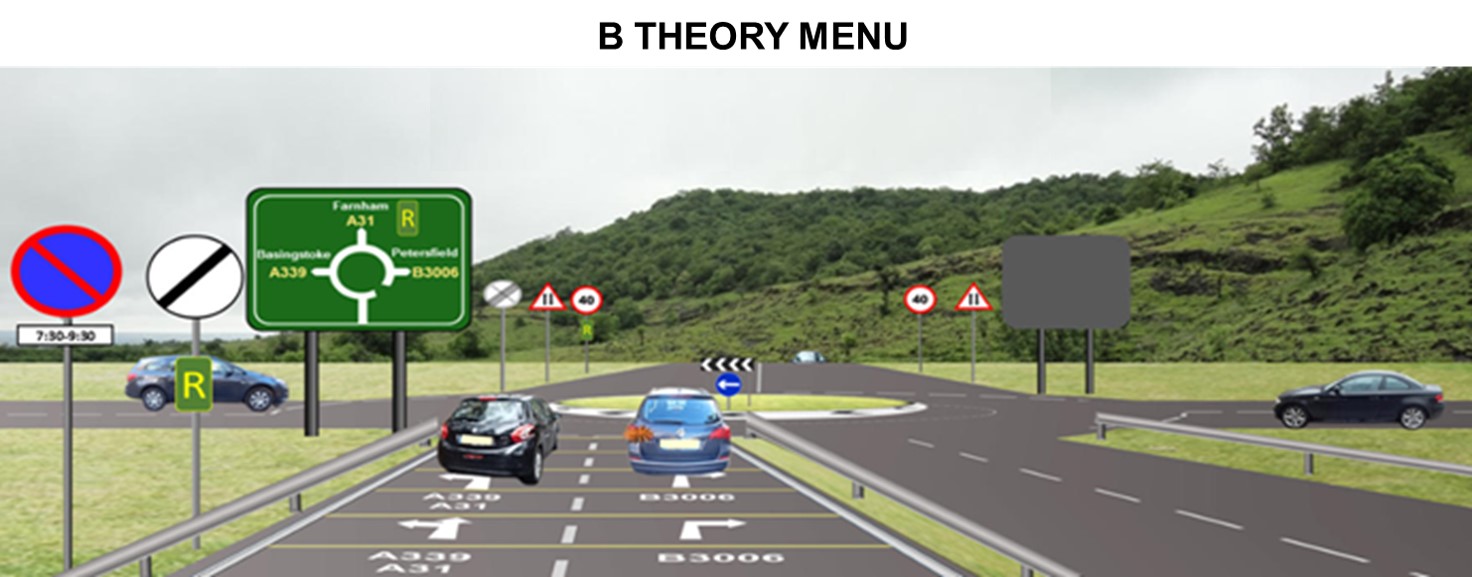JUNCTIONS
This section covers road junctions and the procedures that must be carried out by you the driver.
In the picture, below you are approaching a give way junction. This Is indicated by the double broken white lines and the give way warning sign.
The warning sign is different to other warning signs, the wide part of the sign is at the top, on all other warning signs it is at the bottom. This makes the sign quite distinguishable. There is also a painted triangle on the road.
Generally, at a give-way junction you will have good visibility in both directions, as you approach the junction be prepared to stop. Remember, traffic on the road you are joining has priority but if it is clear you can make the turn without stopping. If there are any obstructions, such as parked vehicles that obscure your vision you must stop and move forward (creep and peep) slowly until you can see clearly. The double yellow lines mean no parking. You are not allowed to park with 10 metres of a junction.
In the picture below you are approaching a stop junction, you must stop. The junction has a solid white line,
the word stop is painted on the road surface. The sign is mandatory and has a unique hexagonal shape which can be recognised even if it is covered in snow. It is a stop junction for a reason as you cannot see clearly in either direction. In this situation trees obscure your vision it can just as easily be buildings. You might also have to creep forward slowly until you can see clearly.
The junction below is classed as a Y junction. In this situation visibility there are no permanent obstructions and it is quite an open junction. It is a give way junction because of these factors, but you still must be very careful.
You will have to look over your right shoulder as you will not be able to see the black car in your mirrors.
If there were permanent obstructions such as trees or buildings the junction would be protected by a stop sign. Remember traffic on the main carriageway has right of way. If you were approaching this type of junction in a van, in addition to your already limited vision, unlike a car you will not have rear side windows to see out of when looking over your shoulder (Rear Quarters).
Whilst driving you may find yourself approaching a junction Similar to the one below. It is a crossroads as indicated by the warning sign.
What makes this junction different, there are no road markings, nobody has priority. What would you do if you find yourself in a situation like this?
The correct procedure is to be courteous, if not sure wait.
The flashing of headlights and waving of hands (beckoning) is not a guarantee of safe passage.
STAGGERED JUNCTION
In addition to standard crossroads, whilst driving you will encounter a staggered junction. All this means is that you will encounter a junction to your left and right close together.
Extra care must be taken in making sure that traffic emerging has seen you as there could be more than normal activity.
BLIND SPOTS
At all junctions all round observation is necessary. A big cause of accidents is down to the driver not checking their blind spots. A blind spot is an area that is not covered by your mirrors. The picture below shows an additional blind spot. The door pillar restricts your view of the surrounding area.
On some vehicles the door pillars are quite wide and can obscure cyclist’s, motorbikes and pedestrians. In this picture you can just about see a pedestrian. You will have to move your position to make sure that it is clear and safe to proceed.
TRAFFIC LIGHT CONTROLLED
So far, we have covered junctions that are not light controlled. It is important to understand the traffic light sequence, these pictures show the correct order. As you can see red to green has a different sequence to green to red.
There are several questions on the light sequence.
On approach to lights, if the green has been on for a while be prepared to slow down and stop as they could change. If the amber light is lit on its own the next light will be red. If the lights are out of commission, extra care must be taken as no one has priority.
BOX JUNCTION
This type of junction is classed as a box junction. painted yellow box on the road surface. The yellow painted box is designed to keep the junction clear and can be found at many major intersections. You are in the blue car, you can stop in the junction because your exit is clear but oncoming traffic is preventing you from turning.
The black car behind you that is going straight on must stop behind the white line until it can cross the junction and clear it even though it has a green light. If the black car moves forward and the lights change it could find itself blocking the road for the other traffic.
TURNING OFFSIDE TO OFFSIDE
You have arrived at this crossroads and wish to turn right. The lights are green, you notice that there is a vehicle coming towards you wishing to turn right. You must complete the turn by driving around the rear of the other vehicle. This is classed as offside to offside as it gives you a safe view of other oncoming traffic.
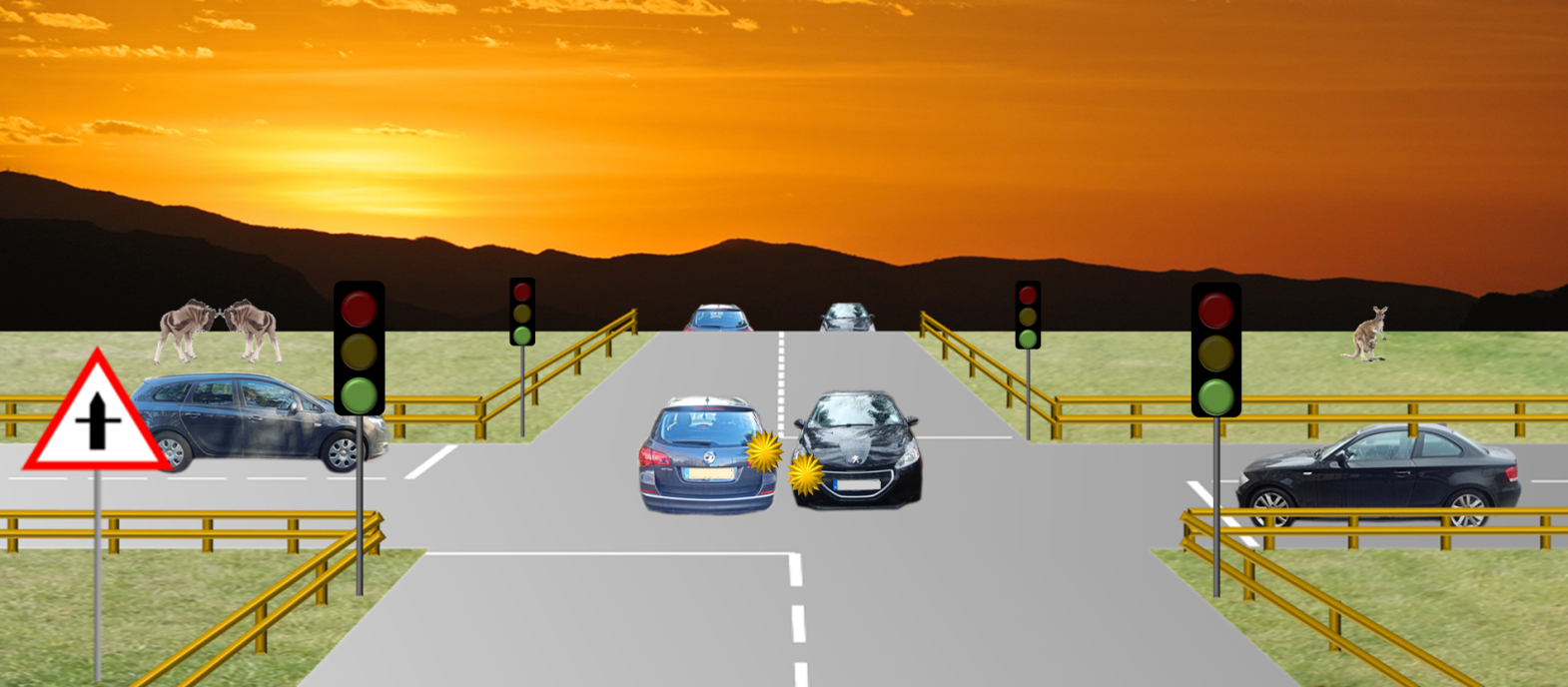 There are exceptions to this rule. If you have to make the turn nearside to nearside there will be painted road markings and filter lights indicating this. This will allow you to turn in front of the other vehicle.
There are exceptions to this rule. If you have to make the turn nearside to nearside there will be painted road markings and filter lights indicating this. This will allow you to turn in front of the other vehicle.
ROAD WORKS:
In addition to traffic controlled junctions you will come across temporary controls, these can be found at junctions where road works are in operation.
The control of the junction can take various forms, road workers can control the traffic with stop and go boards. There could be temporary traffic lights, in this situation when the red light shows do not go past the warning sign no matter how far back from the lights it is set. The board has been positioned for a reason not an inconvenience. Extra caution is needed as there might be workmen, plant machinery and narrow lanes.
ROUNDABOUTS
You are approaching this roundabout and wish to take the second exit, the A31 towards Farnham. You must approach in the left-hand lane, unless road markings tell you different. There is no need to signal left until you are opposite the centre of the junction before the one you wish to exit on.
Not signalling correctly can cause confusion to other motorists as a roundabout is designed to help traffic flow.
You must give way to traffic coming from your right that is on the roundabout. Causing traffic to slow down or stop is not acceptable and will result in you failing your driving test.
If you wish to turn right, approach in the right-hand lane with your right signal on, change your signal at the appropriate time. You can see there is a single broken entry line which indicates the perimeter of the roundabout, do not enter the roundabout unless it is safe.
There is a warning sign indicated by the red edged triangle. The blue circle sign on the roundabout is an instruction telling you to keep to your left, there will also be deviation arrows (white arrows on a black background) enforcing this. You must normally keep in the left-hand lane when tuning left or going ahead, there will be times that the road markings tell you to approach in a different lane.
MINI ROUNDABOUTS
This is a mini roundabout; It is classed as a junction. It is marked by a slightly raised painted white circle. Mini roundabouts have been installed at normal junctions that have proved difficult for motorists to turn right onto other roads because of the volume of oncoming traffic.
Like bigger roundabouts you give way to traffic from the right. Mini roundabouts help the traffic flow.
The blue sign indicates the mini roundabout and it is an instructional sign. When using this junction you must where possible make an effort to drive around the painted circle.
DUAL CARRIAGEWAYS
The black car on the right intends to turn right on to this dual carriageway. The dual carriageway has a narrow central reservation. This will make it difficult for the black car to carry out this manoeuvre.
The black car must wait until it is clear in both directions. If it pulls forward it could potentially stop traffic. The driver must wait until it is clear in both directions before driving forwards.
ONE WAY SYSTEMS
You are driving down a one-way street and are approaching the end of the road. Traffic signs tell you that you are about to turn onto a two-way road.
You wish to turn right, what lane should you approach in?
Make sure you are in the correct lane in plenty of time.
The blue one-way signs are instructional.
The two-way traffic crossing a one way road sign is a warning sign.
TURNING LEFT ON TO A SIDE ROAD
The lorry approaching this junction is in the middle of the road straddling the white line and is showing a left-hand signal.
Stay back, the long vehicle needs more room to turn left.
You are approaching this junction and wish to turn left, the cyclist in front of you is travelling very slowly, there is a pedestrian crossing the road.
You must never overtake another road user when you intend to turn left, you must stay back. You must always give way to pedestrians crossing the side road.



